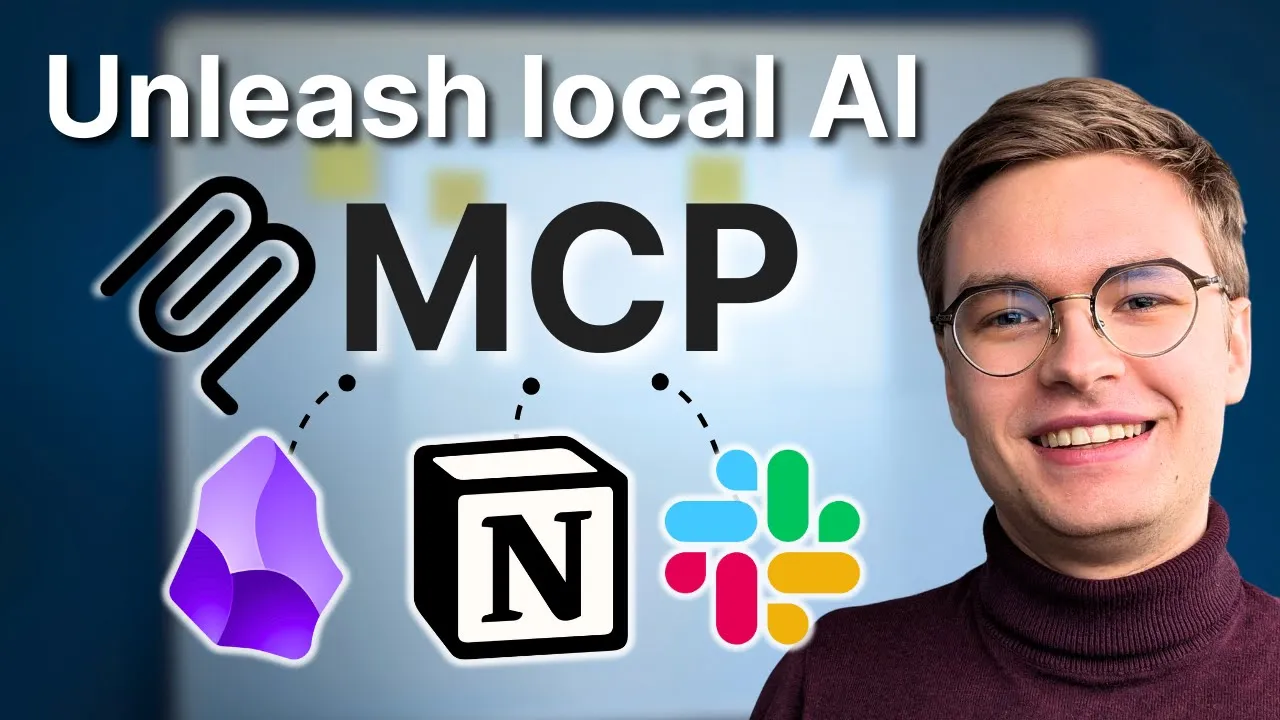Complete AI Knowledge Base Creation Guide: From Concept to Implementation
Building an AI-enhanced knowledge base transforms passive information storage into an active insight generation system. This comprehensive guide covers the complete implementation process, from initial architecture decisions through advanced optimization techniques, based on successful deployments across multiple organizations.
Knowledge Base Architecture Design
Effective AI knowledge bases require careful architectural planning that balances functionality with performance.
Core Component Structure
A robust AI knowledge base consists of several integrated components:
- Document Processing Pipeline: Handles ingestion, parsing, and preprocessing of various content types
- Embedding Generation System: Creates vector representations of content for semantic search
- Vector Database Layer: Stores and indexes embeddings for efficient similarity queries
- AI Processing Engine: Generates insights, connections, and responses based on knowledge content
- User Interface Layer: Provides intuitive access to knowledge and AI-generated insights
Each component must be designed for scalability and maintainability while optimizing for your specific use case requirements.
Data Flow Architecture
Plan information flow patterns that support both human knowledge creation and AI insight generation:
- Ingestion Stage: Raw content enters through various channels (documents, web pages, manual entry)
- Processing Stage: Content is parsed, chunked, and prepared for vector embedding
- Storage Stage: Original content and embeddings are stored with appropriate metadata
- Query Stage: User queries trigger similarity searches and AI analysis
- Response Stage: Results are synthesized and presented with relevant context
This architecture ensures efficient processing while maintaining data integrity and accessibility.
Document Processing and Preparation
The foundation of effective AI knowledge bases lies in sophisticated document processing that optimizes content for AI understanding.
Content Parsing and Extraction
Implement robust parsing capabilities for diverse content types:
- Text Documents: Extract structure, headings, and formatting context
- PDFs: Handle complex layouts, tables, and embedded images
- Web Pages: Parse HTML while preserving semantic structure
- Multimedia Content: Extract transcripts, captions, and descriptive metadata
Use libraries like PyPDF2, BeautifulSoup, or specialized OCR tools depending on your content types.
Intelligent Chunking Strategies
Develop chunking approaches that preserve semantic coherence:
- Semantic Chunking: Split content at natural boundaries (paragraphs, sections)
- Overlapping Windows: Create context overlap between chunks to maintain continuity
- Hierarchical Chunking: Maintain document structure through nested chunk relationships
- Dynamic Sizing: Adjust chunk sizes based on content type and complexity
Effective chunking dramatically improves AI understanding and retrieval accuracy.
Metadata Enrichment
Enhance content with comprehensive metadata that supports advanced querying:
- Source Information: Author, creation date, document type, source location
- Content Classification: Topics, categories, complexity level, target audience
- Relationship Data: Links to related documents, referenced sources, dependency relationships
- Quality Metrics: Content freshness, accuracy indicators, usage statistics
Rich metadata enables sophisticated filtering and ranking of AI-generated insights.
Vector Database Implementation
Vector databases form the technical backbone of semantic search and AI insight generation.
Database Selection and Configuration
Choose vector database solutions based on your scale and performance requirements:
- Pinecone: Managed solution with excellent performance and minimal operational overhead
- Weaviate: Open-source option with strong GraphQL integration and hybrid search capabilities
- Chroma: Lightweight solution ideal for development and smaller deployments
- Qdrant: High-performance option with advanced filtering and clustering capabilities
Configure databases with appropriate index settings, similarity metrics, and performance optimizations. For deeper understanding, explore the comprehensive vector databases guide for AI engineering.
Embedding Generation Strategy
Implement embedding generation that captures semantic meaning effectively:
- Model Selection: Use models like OpenAI’s text-embedding-ada-002 or open-source alternatives
- Batch Processing: Optimize embedding generation for large document collections
- Incremental Updates: Handle new content addition without full reprocessing
- Quality Validation: Implement checks to ensure embedding quality and consistency
Consistent, high-quality embeddings are crucial for accurate semantic search and connection discovery.
Index Optimization and Maintenance
Maintain vector database performance through ongoing optimization:
- Index Tuning: Adjust parameters for optimal query performance
- Storage Optimization: Implement compression and archival strategies for large datasets
- Performance Monitoring: Track query latency, throughput, and resource utilization
- Maintenance Procedures: Regular cleanup, defragmentation, and index rebuilding
Proactive maintenance ensures sustained performance as your knowledge base grows.
AI Integration and Insight Generation
Transform stored knowledge into actionable insights through sophisticated AI integration.
Connection Discovery Algorithms
Implement systems that identify meaningful relationships between disparate content:
- Semantic Similarity Analysis: Find conceptually related content across different domains
- Temporal Pattern Recognition: Identify trends and changes over time
- Cross-Domain Bridging: Discover unexpected connections between different knowledge areas
- Citation Network Analysis: Map reference relationships and influence patterns
These algorithms surface insights that would be impossible to discover through manual analysis. This connects to broader RAG system implementation patterns for knowledge retrieval.
Query Understanding and Response Generation
Build sophisticated query processing that understands user intent:
- Intent Classification: Determine whether users seek specific information or broad insights
- Context Expansion: Use conversation history and user profiles to improve understanding
- Multi-Modal Responses: Generate text, visualizations, and structured data as appropriate
- Source Attribution: Maintain clear links between generated insights and source materials
Advanced query understanding transforms knowledge bases from search tools into intelligent assistants.
Continuous Learning and Adaptation
Implement systems that improve performance through usage:
- Feedback Integration: Learn from user interactions and explicit feedback
- Usage Pattern Analysis: Optimize for common query patterns and information needs
- Content Recommendation: Suggest relevant information based on current context
- Knowledge Gap Detection: Identify areas where additional content would be valuable
These learning capabilities ensure your knowledge base becomes more valuable over time.
User Interface and Experience Design
Create intuitive interfaces that make AI capabilities accessible to non-technical users.
Search and Discovery Interfaces
Design search experiences that leverage AI capabilities effectively:
- Natural Language Queries: Allow users to ask questions in conversational language
- Faceted Navigation: Provide filtering options based on metadata and content characteristics
- Visual Exploration: Use graphs and visual representations to show content relationships
- Personalized Recommendations: Surface relevant content based on user behavior and preferences
Effective interfaces make powerful AI capabilities accessible to all users.
Insight Presentation and Visualization
Present AI-generated insights in formats that facilitate understanding and action:
- Interactive Dashboards: Allow users to explore insights through dynamic visualizations
- Contextual Annotations: Provide AI-generated commentary and explanations for complex information
- Relationship Maps: Show connections between concepts through interactive network diagrams
- Temporal Visualizations: Display how information and insights change over time
Rich visualization transforms raw insights into actionable intelligence.
Performance Optimization and Scaling
Build knowledge bases that maintain performance as content and usage grow.
Query Performance Optimization
Implement techniques that ensure responsive user experiences:
- Caching Strategies: Cache common queries and AI-generated insights
- Pre-computation: Generate insights in advance for predictable information needs
- Load Balancing: Distribute query processing across multiple resources
- Progressive Loading: Return initial results quickly while processing continues in background
These optimizations ensure users receive immediate value while comprehensive processing continues.
Content Management and Lifecycle
Develop processes for maintaining knowledge base quality and relevance:
- Content Auditing: Regular review of information accuracy and relevance
- Automated Cleanup: Remove outdated or low-value content automatically
- Version Management: Track content changes and maintain historical perspectives
- Quality Metrics: Monitor content usage, user satisfaction, and system performance
Systematic content management prevents information decay and maintains user trust.
Integration with Existing Systems
Connect AI knowledge bases with organizational workflows and systems for maximum value.
Enterprise System Integration
Develop connections that embed knowledge base capabilities into existing workflows:
- CRM Integration: Surface relevant knowledge during customer interactions
- Project Management Tools: Provide contextual information for ongoing projects
- Communication Platforms: Enable knowledge queries within team collaboration tools
- Business Intelligence Systems: Feed insights into organizational reporting and analysis
Seamless integration ensures AI knowledge capabilities enhance rather than disrupt existing workflows.
API Development and Management
Create robust APIs that enable programmatic access to knowledge base capabilities:
- RESTful Endpoints: Provide standard interfaces for common operations
- Webhook Integration: Enable real-time notifications of new insights or content
- Authentication and Authorization: Implement appropriate security for API access
- Rate Limiting and Usage Monitoring: Manage resource usage and prevent abuse
Well-designed APIs enable innovative applications and integrations beyond your initial vision. Consider following production-ready AI application architecture patterns for robust system design.
Ready to build an AI knowledge base that transforms how your organization discovers and uses information? Join my AI Engineering community for detailed implementation templates, architecture patterns, and ongoing guidance from Senior AI Engineers who’ve built production knowledge systems that deliver measurable business value.
To see exactly how to implement these concepts in practice, watch the full video tutorial on YouTube. I walk through each step in detail and show you the technical aspects not covered in this post.

